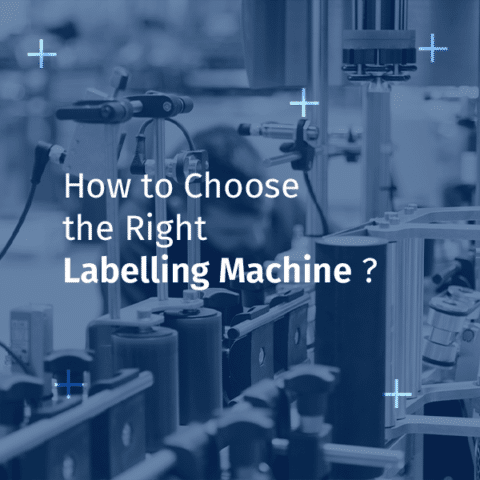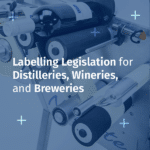Choosing the right labelling machine for your needs is a crucial step in optimising your packaging operations. Here are a few practical tips to guide you through this decision-making process :
- Product formats and shapes
When choosing a labelling machine, one of the first considerations is the diversity of product formats and shapes. Here’s an in-depth analysis to guide you through this first part of the decision-making process :
How many product formats and shapes (10ml, 1L, conical, cylindrical, rectangular) do you need to label with the same machine ?
The first step is to draw up a detailed inventory of the specific formats and shapes your company handles on a daily basis. Whether your products come in small containers such as a 10 ml format or larger ones at 1 litre, this diversity poses a challenge for the labelling machine. It’s essential to determine whether you have a variety of volumes and designs, such as conical, cylindrical or rectangular products, that will need to be labelled on the same machine.
Consider the options and settings available for adapting the machine to different formats of the same shape.
Labelling machines often offer advanced features that make it easy to adapt to different formats of the same shape. Adjustment features that make it easier to switch from one format to another can maximise your operational flexibility. These features can include automated adjustments, modular fixing systems, and quick-set mechanisms. The machine’s ability to adapt seamlessly to a range of formats and shapes ensures optimum efficiency in your labelling operations.
- Type of product
Are your products rigid or flexible ?
When evaluating the ideal labelling machine for your business, the very nature of your products plays a crucial role. The distinction between rigid and flexible products has direct implications for labelling quality. Here’s a detailed exploration of this key consideration :
Flexible products can pose labelling challenges due to a potential distortion.
If your products are soft or flexible, this can present an additional challenge during the labelling process. The walls of flexible products have the ability to deform during the application of the label, which can lead to unsatisfactory results such as bubbles or wrinkles on the label. To overcome these trials, it is imperative to ensure that the labelling machine you are considering buying has specific adjustment mechanisms.
Make sure the machine can be adjusted accordingly.
For flexible products, the ability to adjust the machine accordingly is crucial. Specific adjustments may include changes to the platesetter, adjustable pressure systems, or compensation mechanisms that ensure accurate and uniform labelling even on deformable surfaces. Before buying a labelling machine, take a close look at the features related to adaptability for flexible products. The machine’s capacity to adjust to the variable nature of products helps to ensure consistent labelling quality, regardless of the flexibility level of the articles you package.
- Specific product characteristics
Do your products have welds or notches requiring a specific label alignment ?
When examining the specific characteristics of your products, it is essential to consider the presence of welds, notches or any other feature requiring a precise label alignment. This consideration becomes particularly important to ensure that your products are presented flawlessly when labelled.
The benefits of investing in features such as sensing cells include an increased precision in label placement, reducing the risk of misalignment or incorrect application. This functionality also ensures optimum visual aesthetics, enhancing the market appeal of your products.
By taking into account the specific characteristics of your products and exploring options such as sensor cells, you can maximise the accuracy of label alignment, contributing to a clean and professional presentation of your products. This reinforces the overall quality of your labelling process, which is a key element in the visual impact and the consumer’s perception of your products.
- Number of labels
It is important to determine the number of labels to be applied to each product. This consideration is of significant importance, as it has a direct impact on the design of the machine and its ability to meet your specific needs.
The more labels you have, the more labelling stations the machine needs.
If your labelling process involves applying several labels to each product, it is essential to adapt the machine accordingly. Each labelling station on the machine is designed to apply a specific label to the product, and therefore the number of these stations must be aligned with the number of labels required.
- Label specifications
When selecting your labelling machine, you need to consider the specific characteristics of your labels. Every detail, plays an essential role in the labelling process, whether it is about transparency, embossing, the need for a best-before date (BBD), or the integration of barcodes. Here’s why this stage is so important :
Pass on all the specifics to consider the necessary options.
Transparency : If your labels are transparent, this may influence the type of application mechanism required. Specific devices, such as advanced sensors, can be incorporated to ensure an accurate application to transparent surfaces, avoiding any shifting or wrinkling.
Embossing : Embossed labels add a tactile dimension to the final product. In order to ensure an accurate application and present these features to their best advantage, the labelling machine can be adjusted to gently handle embossed labels, ensuring optimum adhesion without altering the texture.
Use-by dates and barcodes : If your products require use-by dates or barcodes for tracking and tracing purposes, the machine can be fitted with specific devices. Advanced detection systems can be integrated to ensure the accurate application of these crucial elements, contributing to the regulatory compliance and product traceability.
- Cadence requirements
When assessing your labelling speed requirements, it is essential to find the perfect balance to ensure optimum productivity without compromising quality. This crucial step requires a thorough understanding of the machine’s ability to handle a specific volume of labelling in a given timeframe.
Start with assessing your current production volume and anticipating future developments. It’s essential to choose a labelling machine with a speed that matches your current needs, while having the flexibility to adapt to your potential future growth. Opt for a scalable solution that can keep up the pace with the rapid growth of your business.
Some machines offer features that allow the speed to be adjusted according to specific needs. This flexibility can be invaluable, allowing labelling speeds to be modulated according to fluctuations in demand. A scalable, adaptable machine offers an ideal solution for optimising throughput while ensuring the efficient use of resources.
- Scalability and growth
When considering the labelling machine’s options, the ability to evolve and adapt to the future growth of your business is a crucial criterion. Opting for a scalable machine offers significant benefits in terms of operational efficiency and long-term profitability.
An essential aspect of strategic planning is to anticipate the growth of your business. Consider not only your current labelling needs, but also how those needs might change over time. Choose a labelling machine capable of adjusting and responding to a potential increase in production without the need for major modifications or investment.
- Budget
Budget management is a crucial aspect when choosing a labelling machine. It is imperative to clearly define your budget and carry out a thorough analysis to ensure an optimal investment.
Before exploring the options on the market, draw up a realistic budget taking into account the financial resources available. This will serve as a solid basis to guide your choices and help you avoid overspending. Once you have defined your budget, compare the prices of the different labelling machines available. Make sure you take into account not only the initial cost of the machine, but also the costs associated with specific features, production speed and any additional options.
Explore the financing options that could make the purchase of the machine easier. Some suppliers or financial institutions offer flexible payment plans that can ease the initial financial burden.
By taking these aspects into consideration, you will be able to select the labelling machine that is perfectly suited to your operational needs. We take a hands-on approach to help you make the right choice. We test our machines using samples, which enables us to evaluate their performance and determine the solution that best meets your specific requirements.
For us, customisation is key, and our ranges of labelling machines include semi-automatic and automatic options. These diverse ranges offer an increased flexibility to meet a variety of operational needs, from smaller-scale productions to high-speed automated packaging lines.
Please do contact us to discuss your packaging projects and ask away.











